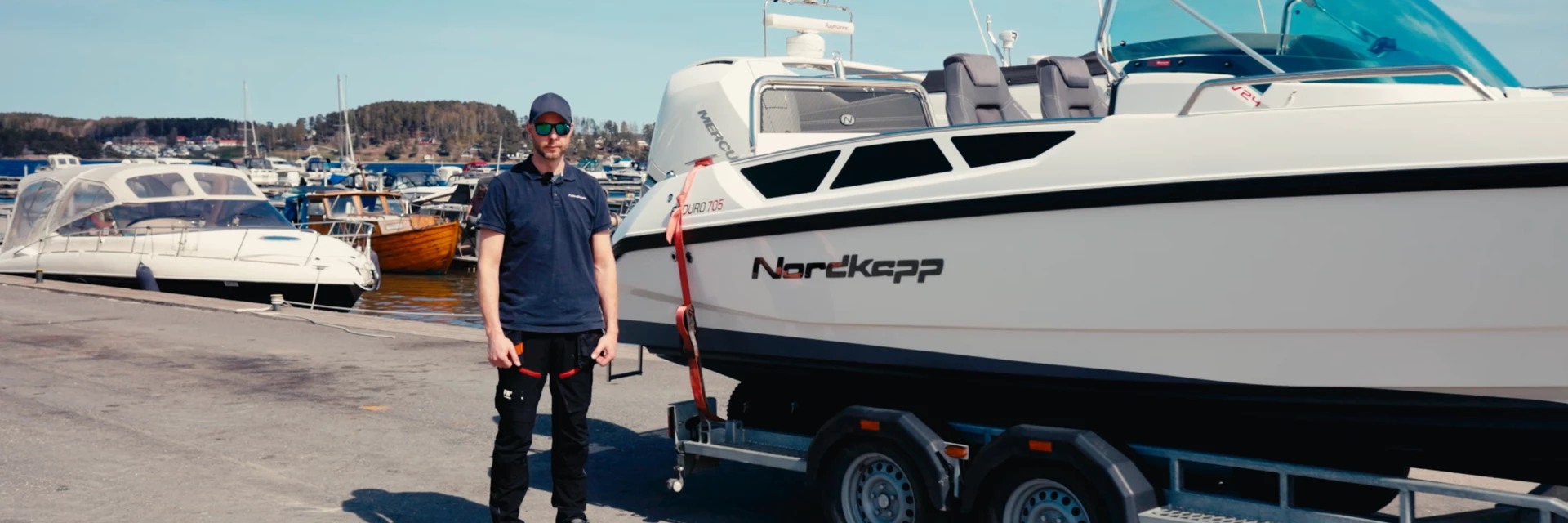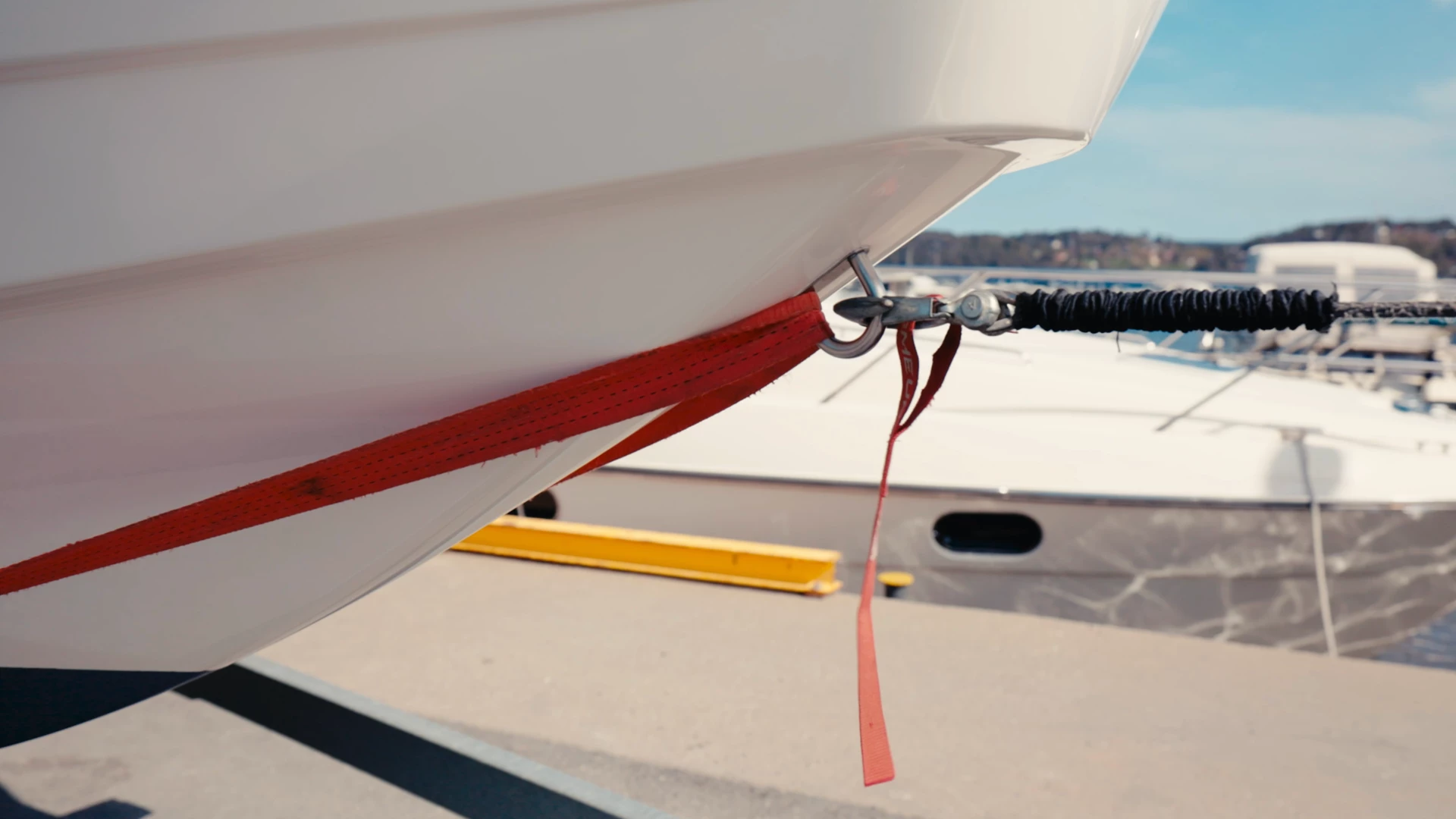
Tips For Launching Your Boat on a Trailer
A Video Tutorial Presented by Nordkapp
Launching your boat signals the beginning of a thrilling season on the water. And while some things can go wrong, the process becomes easy if you know how to do it right. This video tutorial aims to simplify the process, providing essential tips for first-time boaters. Experienced boaters can also use this video to refine their launching techniques.
Securing Your Boat to the Trailer
Before you head to the marina, it's essential to secure your boat to the trailer properly. We recommend a straightforward three-strap method to keep your boat stable and secure.
- Bow Securing: Use a strap through the bow hook and secure it tightly to the trailer, ensuring the front remains stable.
- Aft Securing: Attach two ratchet straps to the boat's rear, one end to the trailer and the other to the cleats. Place a protective layer, like a soft cloth, between the strap and the boat to avoid scratches.
- Checking the Straps: After tightening the straps, ensure they are firm but not overly tight to avoid damaging the boat. Inspect all connections and the straps for any wear or damage to ensure everything is secure for transport.


Final Preparations Before You Hit the Road
After securing your boat to the trailer, there are a few more steps to complete before you set off. These final checks are crucial to ensure your journey to the marina is safe and smooth.
- Securing Loose Items: Ensure all items, such as fenders and ropes, are stowed away securely to prevent them from shifting during the drive.
- Closing Hatches: Double-check that all hatches are tightly closed to prevent them from opening during transit.
- Removing the Rain Cover: Remove the rain cover to prevent damage to your boat's windshield.
- Engine Positioning: Ensure your engine is tilted up in its transport mode to prevent damage during the drive to the marina.

Arriving at the Marina
Upon arriving at the marina, just a few simple steps will have you ready to launch your boat.
- Unstrap and Check: Remove all ratchet straps and double-check that the boat's drain plug is secure.
- Power Up: Turn on the main power switch and fully tilt the engine up to prepare for launch.
- Prepare for Launch: Set up the fenders and attach the ropes to ensure everything is ready for a smooth transition into the water. Attaching a rope in the front cleats provides a backup method to control the boat if the winch fails during the launch.
Launching Your Boat
With all preparations complete, you're now ready to launch your boat. While experienced boaters may manage this task solo, having an extra pair of hands can make the process safer and smoother.
- Inspect the Ramp: Begin by carefully inspecting the boat ramp for any hidden obstacles that could impede your launch or damage your boat or trailer. Look for debris, rocks, or uneven surfaces.
- Prepare the Trailer: Disconnect the trailer's electrical wiring before reversing down the ramp to prevent damage or short circuits when the trailer contacts the water. If your trailer is equipped with removable light fixtures at the back, take these off or fold them to the sides to avoid contact with water.
- Position the Vehicle and Trailer: Align your vehicle and trailer straight with the ramp. Start reversing slowly towards the water, keeping the boat aligned with the centre of the ramp.
- Getting the Boat in the Water: Continue reversing until the water is a few centimetres below the lowest bolt on your trailer's tyre. Make sure the trailer's brakes stay out of the water. Apply the car's parking brake at the correct depth and then winch the boat slowly into the water.
- Launch the Boat: Unhook the winch when the boat starts to float. If you have an assistant, they can hold a rope attached to the boat to control it once detached. Once the boat reaches adequate water depth, tilt the engine down and secure the boat in place.
- Move the Vehicle and Trailer: Once the boat clears the trailer, move your vehicle and empty trailer from the ramp area to a designated parking spot.
- Final Checks: Before setting off, perform a final check to ensure the boat's engine runs smoothly and all necessary equipment is on board.
Following these steps will help you achieve a smooth and efficient boat launch, ensuring you spend less time on the ramp and more time enjoying the water. Happy boating season!
Explore more articles
Join the Nordkapp family
Start your weekend with a boating story from Nordkapp. Enjoy exclusive invites to events, updates on new models and essential boating tips.











